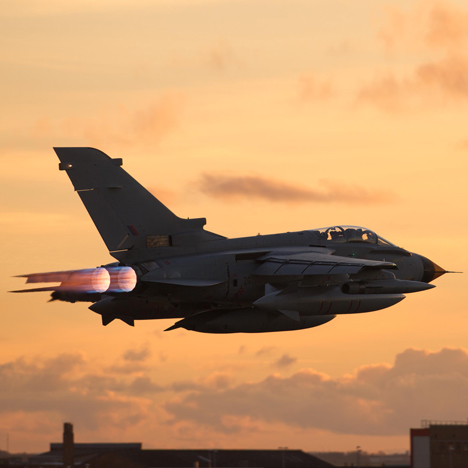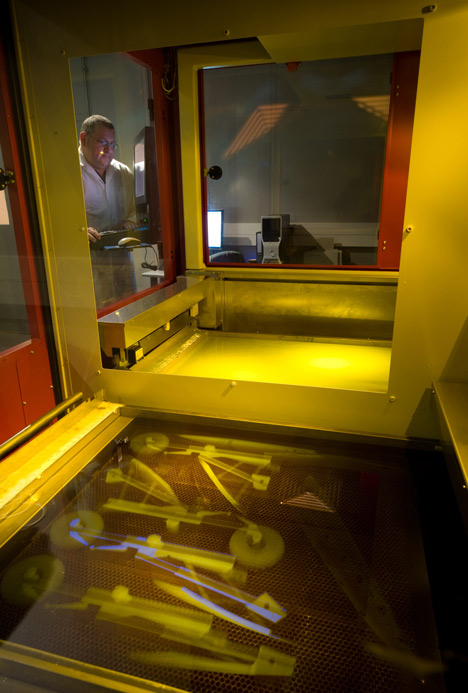
First combat aircraft with 3D-printed parts completes test flight
News: a fighter jet incorporating 3D-printed parts has successfully completed a test flight, making it the first combat aircraft produced using additive manufacturing.
Defence contractor BAE Systems announced yesterday that the Tornado aircraft fitted with components printed at a Royal Air Force base completed a successful test flight from the company's airfield at Warton in Lancashire, UK, last month.
The firm's combat engineering team is now using 3D printing to design and produce ready-made parts for four squadrons of Tornado GR4 aircraft at RAF Marham, a Royal Air Force station in Norfolk, UK. Components include protective covers for cockpit radios, support struts on the air intake door and protective guards for power take-off shafts.

They estimate that use of the technology will cut the cost of repairs, maintenance and service to the Royal Air Force by more than £1.2 million over the next four years, but also paves the way for using 3D printed parts in other military equipment.
"You are suddenly not fixed in terms of where you have to manufacture these things," said Mike Murray, head of airframe integration at BAE Systems. "You can manufacture the products at whatever base you want, providing you can get a machine there, which means you can also start to support other platforms such as ships and aircraft carriers."
"If it's feasible to get machines out on the front line, it also gives improved capability where we wouldn't traditionally have any manufacturing support," he added.
The US military has been developing its own 3D printers for the frontline for some time, enabling soldiers to quickly and cheaply produce spare parts for their weapons and equipment, while NASA is developing an orbiting factory that will use 3D printing and robots to fabricate giant structures such as antennas and solar arrays in space.